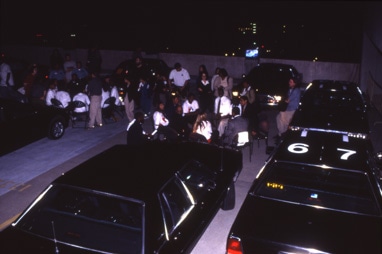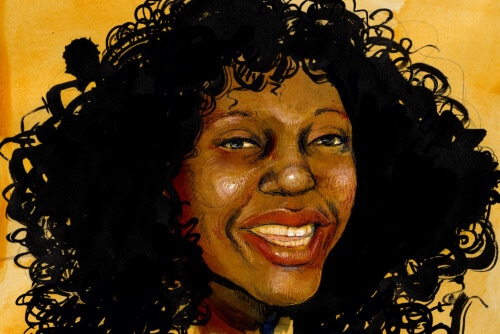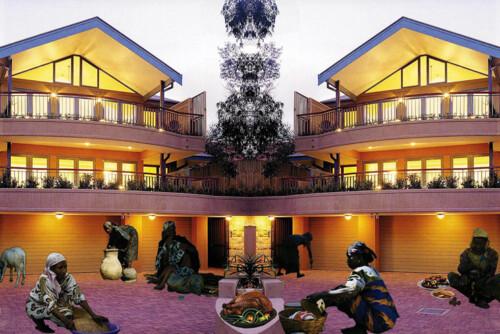Producing Justice
What exactly gets reproduced by reproductive technologies? All too often, as many pieces in this issue detail, reproductive technologies are modes for reproducing hierarchies based on race, sex/gender, sexuality, class, physical ability, and position in the global economy. As Sarah Franklin reminds us in this issue, though, there is a long feminist tradition of imagining that new technologies—in the right hands, in a feminist mode—may produce fantastic new ways of being, perhaps even disrupt the sex distinction itself. Reproduction, as Rose prompts, is never a simple matter of projecting identical entities (be they people, traits, or DNA sequences) relentlessly into the future.1 Instead, every reproduction opens the possibility for change, “mutations” that are sometimes subtle and sometimes dramatic. This is true on an organic level, and also the social one. Viewed this way, technologies of social reproduction also hold the possibility of producing something that does not yet properly exist—namely social justice. Multiple versions of this particular feminist vision have been articulated and enacted by artists, activists, scholars, and ordinary people trying simply to rework the meaning and modes of “family-building” to align with a politically-grounded determination to act as if all reproductive futures mattered.
Reproductive justice offers a way to rethink the fundamental conditions of reproduction, potentially giving structure to longstanding but ad hoc feminist moves towards transformation in this realm. Women of African Descent for Reproductive Justice, a group of health activists, coined the term to signal “reproductive health integrated into social justice” at a meeting in 1994.2 More than simply a term or a concept, reproductive justice describes a movement, led by women of color and allied with other movements against oppression based on race, gender, sexuality, class, migrant or immigrant status, and nation. While the movement is new, the reproductive justice concept is rooted in longstanding insights of women of color activists and scholars, such as Puerto Rican activist and physician Helen Rodriguez Trias, whose eloquent critique of sterilization abuse in Puerto Rico can be heard in the documentary La Operación,3 and Angela Davis, whose 1981 classic Women, Race, and Class included a chapter devoted to the history and politics of reproductive rights.4 There, Davis called out the racism and class-bias of the white foremothers of the movement for birth control and abortion rights, as well as the generation of abortion activists who followed uncritically in their footsteps:
The abortion rights activists of the early 1970s should have examined the history of their movement. Had they done so, they might have understood why so many of their Black sisters adopted a posture of suspicion toward their cause. They might have understood how important it was to undo the racist deeds of their predecessors, who had advocated birth control as well as compulsory sterilization as a means of eliminating the ‘unfit’ sectors of the population.
As the rich historical accounts by Dorothy Roberts, Jennifer Nelson, and Silliman, Gerber Fried, Ross, and Gutierrez show, Black, Latina, Asian, and Native American women have been an energetic force behind the demand for reproductive freedom for decades, pushing against the narrow notion that reproductive freedom means only freedom from (unwanted) reproduction.5 Ensuring that birth control went hand in hand with provision of health care, nutrition programs, and broad anti-poverty work that would allow women to raise the children they bear with dignity, feminists of color and their white allies have been pursuing a reproductive justice agenda for a far longer period than the lifetime of the term.
Though she’s rarely if ever claimed as a foremother of the reproductive justice movement, we find other roots of contemporary reproductive justice demands in the words of Audre Lorde. Delivering the speech I Am Your Sister at Medgar Evers College in Brooklyn in 1984, Lorde pulled sexuality-based oppression onto the stage. Identifying some of the same broad issues that other feminists of color were connecting to reproductive rights, Lorde noted that homophobia and heterosexism blocked recognition that she and other lesbians were active members of Black women’s struggle for justice:
When I picketed for Welfare Mothers’ Rights, and against the enforced sterilization of young Black girls, when I fought institutionalized racism in the New York City schools, I was a Black Lesbian.6
Lorde went further, pointing out that homophobia and heterosexism were strategically used not just to demonize lesbians, but to obscure the reality of Black people’s lived experiences of “family”:
I have heard it said that Black Lesbians are a threat to the Black family. But when 50% of children born to Black women are born out of wedlock, and 30% of all Black families are headed by women without husbands, we need to broaden and redefine what we mean by family. I have heard it said that Black Lesbians will mean the death of the race. Yet Black Lesbians bear children in exactly the same way other women bear children, and a Lesbian household is simply another kind of family. Ask my son and daughter.7
In the past few years, foes of abortion and reproductive health services have adopted the language of racial and sexual justice, pointing selectively to the history of racism in the reproductive rights movement, and arguing that the disproportionate number of abortions obtained by women of color amounts to “genocide.” As we go to press, conservative Governor Jan Brewer of Arizona has just signed a law banning abortions that are performed because of the race or sex of the fetus; this is the first law banning “race selection” abortions, but three other states (Illinois, Oklahoma, and Pennsylvania) have already banned abortions performed because of fetal sex. While the surface language of the Arizona law is one of equal human dignity, the content of the debate shows how concepts like justice and “multiculturalism” can be mobilized to serve the anti-immigrant sentiments that dominate Arizona politics. As one Arizona Republican who supported the bill explained, “We are a multicultural society now and cultures are bringing their traditions to America that really defy the values of America, including cultures that value males over females.”
- Ibid. [↩]
- Loretta J. Ross, Understanding Reproductive Justice (Sistersong Women of Color Reproductive Justice Collective, 2006). [↩]
- Ana María García, La Operación (New York: Cinema Guild, 1982). [↩]
- Angela Davis, Women, Race, and Class (New York: Vintage Books, 1981). [↩]
- Dorothy Roberts, Killing the Black Body (New York: Pantheon, 1997); Jennifer Nelson, Women of Color and the Reproductive Rights Movement (New York: New York University Press, 2003); and Jael Silliman, Marlene Gerber Fried, Loretta Ross, and Elena Gutiérrez, Undivided Rights: Women of Color Organize for Reproductive Justice (Cambridge, MA: South End Press, 2004). [↩]
- Audre Lorde, I Am Your Sister: Black Women Organizing Across Sexualities (New York: Kitchen Table: Women of Color Press, 1985): 6. [↩]
- Lorde, 4-5. [↩]




